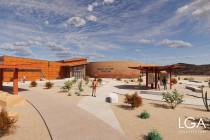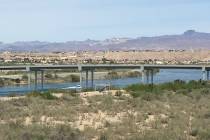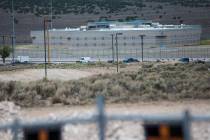Report: Nevada would benefit from transfer of federal lands

CARSON CITY — A new report analyzing the financial ramifications of a takeover of some of Nevada’s millions of acres of federal lands suggests the state would benefit from such a transfer.
A transfer of 4 million acres of U.S. Bureau Land Management land could bring in anywhere from $31 million to $114 million a year, based on a review of four Western states that have significant amounts of trust lands under their control, the report says.
The preliminary draft report from the Nevada Public Land Management Task Force was prepared with the assistance of a consultant and will be reviewed Thursday by the Legislative Committee on Public Lands when it meets in Tonopah.
The task force was created by the 2013 Legislature to evaluate the feasibility of the state taking control of some of the federally controlled public lands in Nevada. A final report is due from the task force by Sept. 1.
The discussion of such a public lands transfer has received heightened interest since the recent cattle grazing dispute between Bunkerville rancher Cliven Bundy and the BLM.
Demar Dahl, an Elko County rancher and chairman of the task force, said the analysis by Intertech Services Inc. shows that a transfer is not only economically feasible but even beneficial to Nevada.
“The way those numbers turned out it looks like we can surely afford it,” he said. “Not only afford it but the state could make a lot of revenue having the land and managing it ourselves.”
The revenues would come from the sale and lease of the resources on the lands, including through mining and grazing, Dahl said.
In recent comments U.S. Sen. Dean Heller, R-Nev., said he supports the work of the task force.
But not everyone is on board with the effort.
In a presentation to the task force in November, David von Seggern, chairman of the Toiyabe Chapter of the Sierra Club, asked how the state would replace the hundreds of federal workers now working in Nevada.
He questioned whether Nevada has the financial resources needed to meet the demands for firefighting or assisting in activities that would support mining, grazing and energy production.
According to the draft report, 81.1 percent of Nevada is under the control of various federal agencies. The analysis looked at the states of Arizona, Idaho, New Mexico and Utah where federal lands make up less of the total, from 34.7 percent in New Mexico to 66.5 percent in Utah.
The analysis looked at acres of “state trust lands” controlled by the states. Nevada has only 3,000 acres of such lands, while Arizona has more than 9 million acres and New Mexico has nearly 9 million trust land acres.
State trust lands were granted to states upon statehood and were set aside primarily to support public schools.
Dahl said Nevada just didn’t do a good job of evaluating the potential benefits of statehood back in 1864 and so ended up with few trust lands.
“The state was controlled by mining interests that did not reside in the state,” he said. “They saw an advantage to statehood and went into it blind.”
But von Seggern noted in his testimony that Nevada originally received 4 million acres in trust lands for the public schools. It is difficult to trace the benefit of the now disposed trust lands to the state school system, he said in his presentation.
Jim Lawrence, who works for the state Department of Conservation and Natural Resources, said Nevada did receive about 4 million acres of random sections of land upon statehood. The state’s congressional delegation in 1880 persuaded Congress to let Nevada officials instead designate which lands they wanted in exchange for reducing the total acreage by half.
The trust lands were then sold off to private individuals as a way of trying to entice people to move into the state, he said.
According to the task force report, the five-year average net revenues to the four states from 2008 to 2012 from the trust lands ranged from $518.8 million in New Mexico to $41.9 million in Idaho.
In 2012 the state of New Mexico distributed $544 million from the trust land revenues to its public school system, $9 million to the University of New Mexico and nearly $3 million to New Mexico State University, among other beneficiaries.
Looking at the four state models, the analysis came up with the range of $31 million on the low end to $114 million with a transfer of the 4 million BLM acres to the state of Nevada.
The task force is recommending a phased-in transfer of public lands, starting with lands in the original railroad corridor across Northern Nevada and lands already identified for disposal by federal agencies. Other priorities are lands designated by the secretary of Interior as solar energy zones, land designated by the BLM as suitable for geothermal leasing but not yet leased, and lands authorized for disposal in current federal legislation.
The task force is not supportive of transferring lands controlled by the U.S. Departments of Energy or Defense, current wilderness areas, national conservation areas, lands managed by the Bureau of Indian Affairs or the National Park Service.
Dahl said it will likely take action by Congress to allow for the transfer of public lands on such a scale. Nevada is working with Utah officials on the issue.
“I think if we can get enough states to pass legislation saying we want our land, and we all go together to Congress, I think we can get it done,” he said.
Contact Capital Bureau reporter Sean Whaley at swhaley@reviewjournal.com or 775-687-3900. Follow him on Twitter @seanw801.


















